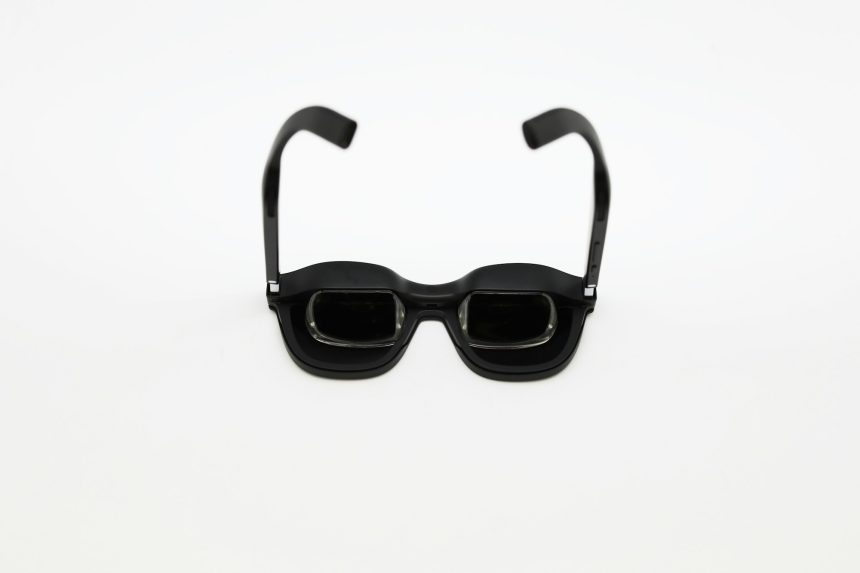For years, augmented and virtual reality have promised to change how we live, work, and play, but have mostly remained trapped in the realm of gamers and tech demos. Headsets were heavy, and they mostly looked like ski masks; besides, software apps are also limited.
But that era is ending.
As AR/VR headsets merge with a new generation of display-less smart glasses, the technology is finally shedding its bulk and stepping into everyday life. The hardware has grown smaller, lighter, and is now powered by artificial intelligence.
As such, the industry’s center of gravity is shifting and its driving demand. According to new data from the International Data Corporation (IDC), global shipments of AR/VR headsets and display-less smart glasses are projected to jump 39.2% in 2025, reaching 14.3 million units. What’s fueling that surge isn’t the traditional gaming headset; it’s the rise of AI-powered smart glasses, led by Meta’s Ray-Bans, and a growing race among tech giants to put artificial intelligence directly on our faces.
The Quiet Revolution in Plain Sight
What began as a gamer’s playground is fast becoming a platform for productivity, creativity, and communication. Unlike the bulky headsets, today’s “display-less” smart glasses look like ordinary eyewear. Despite a simple exterior, they serve as cameras, microphones, and personal assistants ready to feed users AI-powered insights.
As Jitesh Ubrani, research manager for IDC’s Worldwide Mobile Device Trackers, explains, the momentum is building fast. “It wasn’t long ago that consumers were first introduced to AI on glasses,” he says. “Now, brands have begun adding displays, unlocking entirely new possibilities.”
Those possibilities are already reshaping the market. As more companies enter the space and availability widens, Ubrani expects demand to move well beyond early adopters. “Along with growing product availability,” he adds, “use cases and demographics are shifting from the gaming-heavy demand of today to a more mainstream audience—one that values productivity, creativity, entertainment, and notification-rich experiences.”
Marker leaders
No company has embraced this transition more aggressively than Meta. The company has steadily shrunk its technology into sleeker, more wearable form factors and now commands 60.6% of the global AR/VR and smart glasses market as of the second quarter of 2025. Its success comes from two fronts: lightweight smart glasses that feel more like fashion accessories than gadgets, and continued dominance in mixed reality through the Quest line. Together, these product streams are laying the groundwork for what Meta hopes will become true augmented reality glasses—devices that overlay digital information directly onto the physical world.
Meta Connect 2025: A New Era for Smart Glasses
At Meta Connect 2025, new Ray-Ban and Oakley smart glasses showed how Meta is turning eyewear into everyday gateways to the metaverse.
Close behind, Xiaomi has emerged as a serious challenger, capturing 7.7% of the market with its newly launched AI Glasses and Mija Smart Glasses, though its reach remains largely confined to China. Brands like XREAL, RayNeo, and Huawei are also fighting for visibility, rounding out the top five and each experimenting with new approaches to comfort, battery life, and software integration.
Ubrani expects a flood of new entrants from Meta, Google, and other players over the next 18 months—an expansion that could mirror the smartphone boom of the late 2000s. Eyewear brands, opticians, and consumer electronics retailers are already preparing for what many expect will be the next big wave in personal technology.
As more brands, channels, and products emerge, IDC projects hardware volumes to soar to 43.1 million units by 2029, a 31.8% compound annual growth rate. Display-less glasses will likely dominate, acting as an affordable entry point for consumers, while mixed reality headsets and full AR displays will expand at the higher end.
Beyond the Game
Even so, gaming still accounts for the majority of much of the software and services spending in the AR and VR market. Titles like Beat Saber, Gorilla Tag, and Animal Company continue to be top sellers in 2025, driving significant revenue and engagement.
But a growing share of time spent in AR and VR is shifting toward AI-driven applications, creative tools, and media consumption. In terms of hours logged, YouTube continues to lead the pack, an indicator that users are treating their headsets less like consoles and more like mobile entertainment platforms.
IDC forecasts that global spending on apps, services, and related technologies will climb 19.7% in 2025, reaching nearly $12 billion.
The Future Looks Wearable
As the hardware gets smaller and the experiences get broader, the line between form and functionality continues to blur. Glasses that once served only functional or entertainment purposes are becoming AI companions, translators, cameras, and personal assistants, all in a familiar frame.
If the forecasts hold, 2025 could mark the year the industry finally pivots from niche to normal. As Ubrani puts it, “The demand is shifting from gaming-heavy experiences to a broader audience that values productivity, creativity, and connectivity.”
After years of hype cycles and unmet promises, the long-awaited transformation seems to be taking shape, and the next screen in your life might not be a screen at all.


















